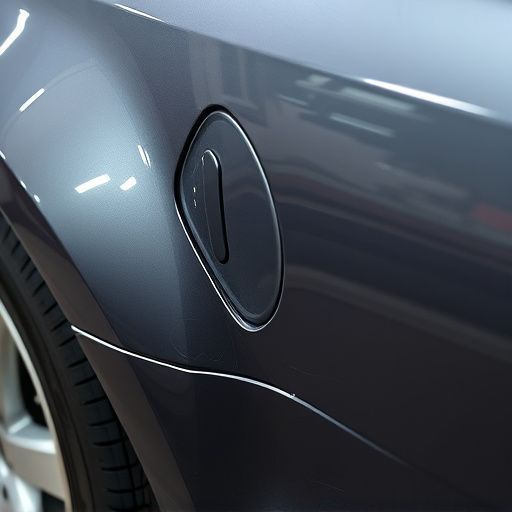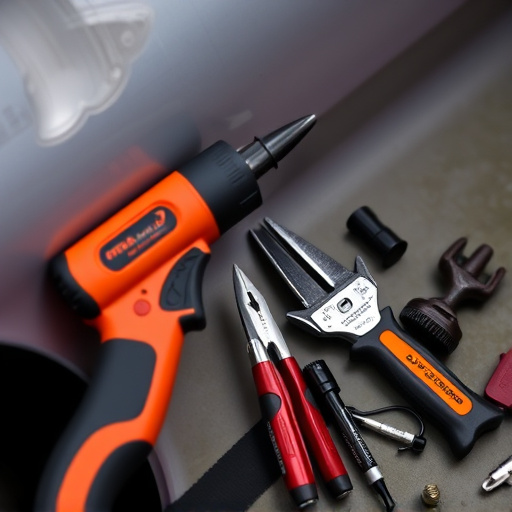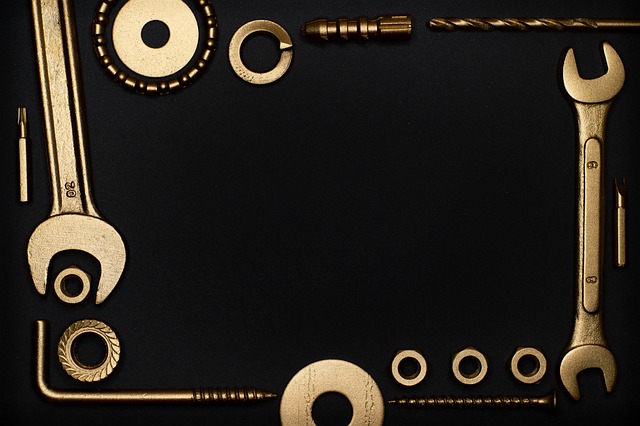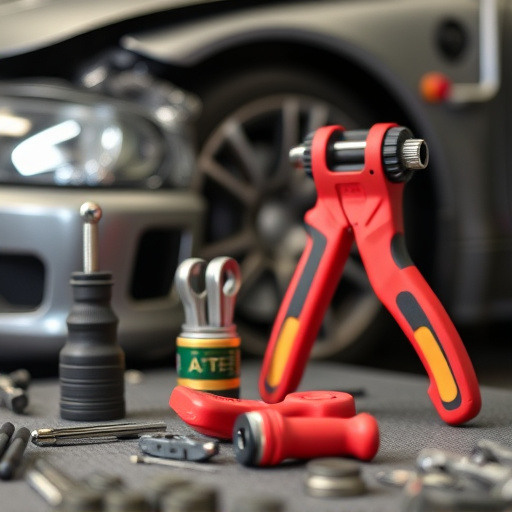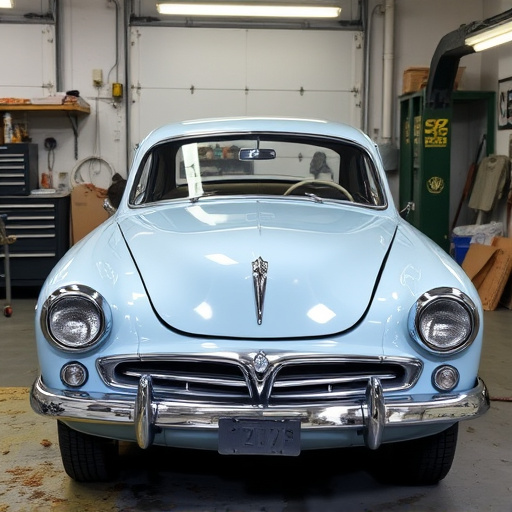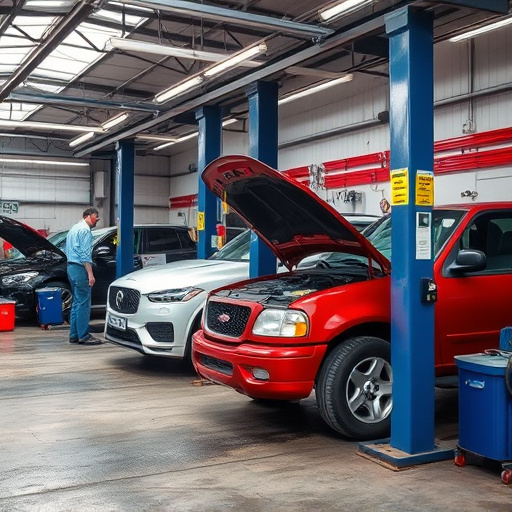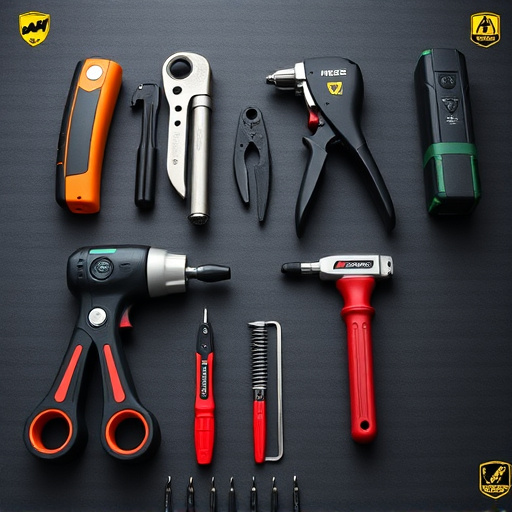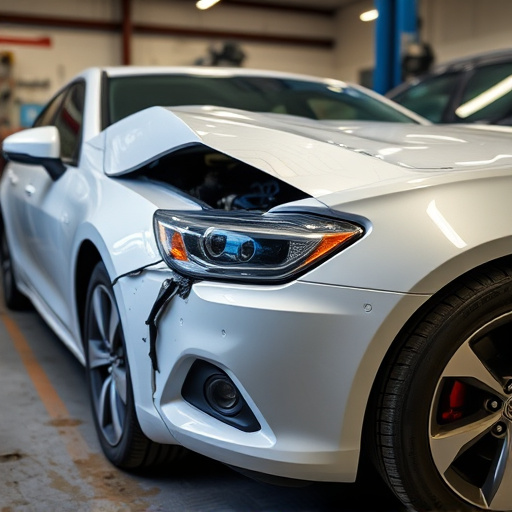Aftermarket collision parts offer cost-effective vehicle repair solutions without compromising quality or safety when chosen and installed correctly. Reputable centers using certified parts ensure accurate, durable restoration, while inferior parts can lead to alignment issues and long-term problems. Prioritize quality and trust professionals for safe, reliable collision repair.
Drivers, especially those involved in accidents, often face a crucial decision: using original equipment manufacturer (OEM) parts or exploring aftermarket collision parts. This article serves as your comprehensive guide through this process. We’ll delve into the intricacies of aftermarket collision parts, highlighting their benefits and potential pitfalls. By understanding these aspects, you can make informed choices that ensure quality, safety, and cost-effectiveness in your vehicle’s repair journey.
- Understanding Aftermarket Collision Parts: A Driver's Guide
- Benefits and Considerations for Using Aftermarket Parts
- Ensuring Quality and Safety in Aftermarket Collision Repairs
Understanding Aftermarket Collision Parts: A Driver's Guide

Aftermarket collision parts have become an integral part of the automotive industry, offering drivers a cost-effective solution for vehicle collision repair. These parts are designed to fit and function just like original equipment (OE) parts but at a lower price point. When a driver is faced with collision damage repair, understanding the aftermarket option can be invaluable. It provides an opportunity to save money without compromising on quality or safety.
Aftermarket collision parts are typically sourced from specialized suppliers who specialize in manufacturing and distributing these components. They often offer a wide range of options, ensuring drivers can find replacement parts for various makes and models. With proper research and selection, drivers can effectively navigate the process of vehicle collision repair, leveraging aftermarket solutions to restore their vehicles to pre-collision condition while maintaining budget-friendliness.
Benefits and Considerations for Using Aftermarket Parts

Using aftermarket collision parts offers several advantages for drivers involved in car accidents. Firstly, they can significantly reduce repair costs compared to OEM (original equipment manufacturer) parts. Aftermarket options are often more affordable, making them an attractive choice for those looking to save money on auto repairs. Additionally, these parts can be readily available and easily accessible, ensuring faster turnaround times during the car body repair or restoration process. This is especially beneficial in cases where quick fixes or temporary solutions are needed while waiting for specialized parts.
However, several considerations come into play when opting for aftermarket collision parts. Quality assurance is paramount; drivers must ensure that the chosen parts meet industry standards and are compatible with their vehicle models. While many aftermarket products are reliable, some may not match the precision and durability of OEM parts. Proper installation is crucial, as incorrect fitting could lead to future issues. Therefore, seeking expert advice or consulting experienced mechanics before purchasing can be invaluable in making informed decisions regarding auto painting, car body repair, or restoration using these alternative components.
Ensuring Quality and Safety in Aftermarket Collision Repairs

When it comes to aftermarket collision parts, quality and safety should never be compromised. Consumers often seek cost-effective solutions for their vehicle repairs, but it’s crucial to remember that using inferior or improperly sourced parts can lead to long-term issues. Aftermarket collision parts, if not of high standard, may not fit perfectly, causing alignment problems and potential safety hazards on the road.
To ensure a safe and reliable collision repair, drivers should only trust reputable collision repair centers that use original equipment manufacturer (OEM) or certified aftermarket parts. These parts undergo rigorous testing to meet safety standards, guaranteeing their performance and durability. Additionally, professional mechanics at these centers are trained to handle complex repairs, ensuring precision and accurate restoration of your vehicle’s pre-accident condition, whether it’s a paintless dent repair or more extensive damage.
Aftermarket collision parts offer drivers a cost-effective way to restore their vehicles, but it’s crucial to balance savings with safety. By understanding the benefits and potential risks, ensuring quality components, and seeking reputable sources, vehicle owners can make informed decisions. When used properly, aftermarket parts can facilitate efficient repairs without compromising the integrity of your vehicle.
